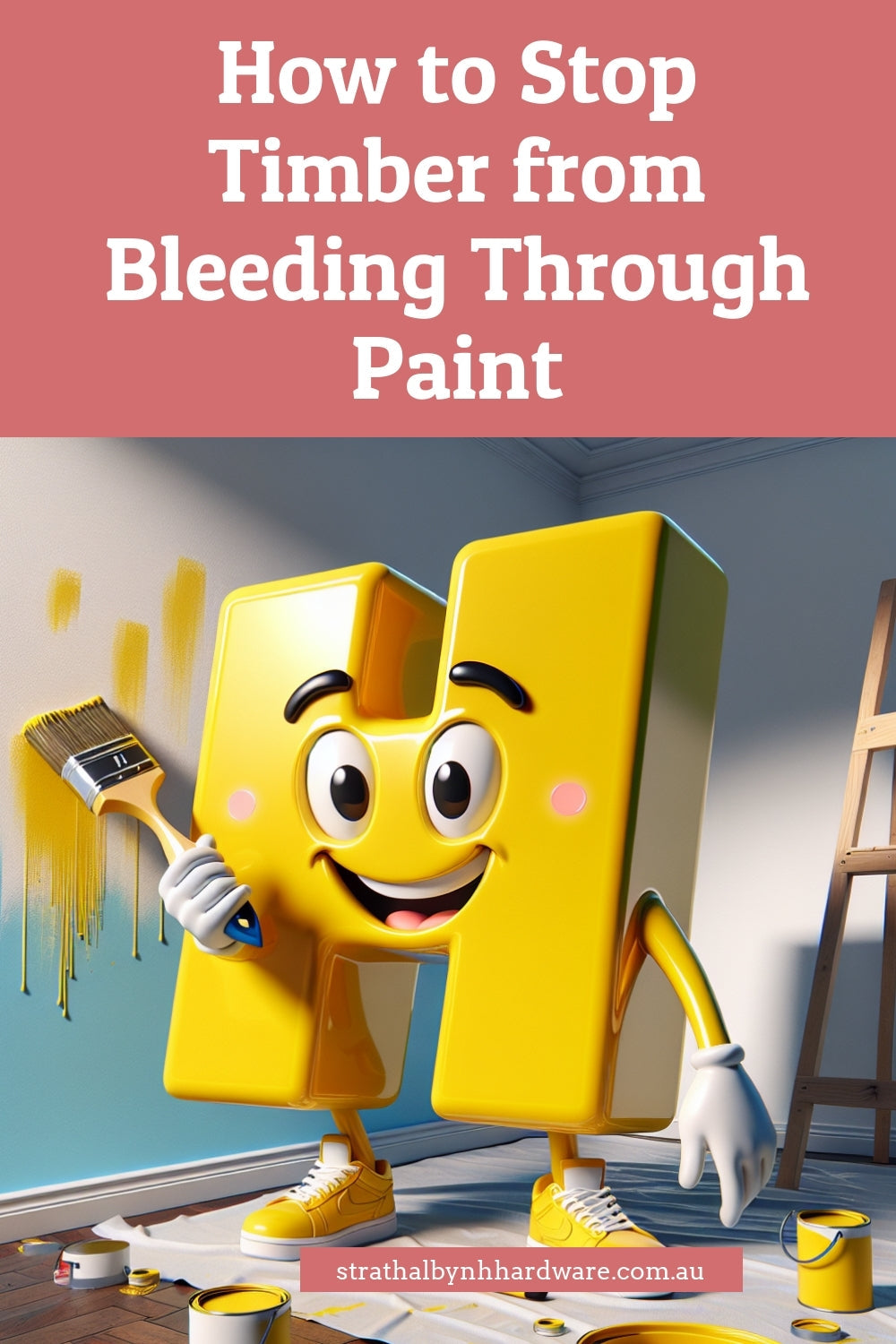
How to Stop Timber from Bleeding Through Paint
Share
Say Goodbye to Surprise Stains: Keep Timber from Bleeding Through Paint
Have you ever stood back after finishing a painting project—roller washed, drop sheets folded, brush cleaned—and noticed strange brownish stains seeping through your lovely new paint? If you’ve painted over timber, I feel your pain. That sneaky staining? That’s timber tannin bleed. And it's every DIYer’s silent nemesis.
It usually appears when you're working on raw or stained timber, particularly ones like cedar, meranti, or even heavily resinous pine. You slap on a perfect coat of white, only to get the distinct look of old tea bags leaching through your paintwork after it dries. Not the finishing touch anyone’s going for, right?
Why Does Timber Bleed Through Paint?
The culprit is tannin—a natural compound stored in the surface of certain wood types. When moisture hits those tannins under freshly applied paint (especially in water-based formulas), it draws them up to the surface. That’s when the stains appear. Unfinished woods and even some previously painted surfaces are prone to this, setting a perfect trap for eager weekend warriors.
Here’s the Good News: You Can Stop It Before It Starts
Like anything, preparation is everything. Before you grab a roller and hope for the best, it pays (literally) to use the right primer that blocks tannin stains. There are a few products I always reach for when I'm going head-to-head with bleedy banister rails, fence posts, or weatherboards that have seen better days.
Prime Time: What You Need Before the Paint Goes On
One of my go-tos is the Haymes Ultra Lock Undercoat. This multi-talented primer forms an excellent barrier on bare timber, effectively trapping tannins before they reach your topcoat. Total lifesaver on frustrating timbers.
What I love most? It sticks like cling film to glossy surfaces and cures super quickly. It’s a must-have if you’re repainting cabinets or trims with unknown dodgy old finishes underneath. One coat, solid coverage. You’ll already feel better about your wall (and life 😊).
A Quick How-To for Blocking Timber Bleed
For your project to go smoothly—and for the colour you wanted to actually stay the colour you wanted—just follow these steps:
- Clean your surface carefully. Sugar soap works beautifully to remove grease and dust so the primer adheres properly.
- Sand back glossy areas or rough patches. A quick scuff is fine if the surface isn't raw.
- Apply your tannin-blocking primer, like Haymes Ultracover Ultra Lock, using a high-quality synthetic brush or roller.
- Let it completely dry. Drying time varies, but give it a few hours or leave overnight if you're not in a rush.
- Follow with your preferred topcoat. For depth and richness, especially on doors or trims, go for at least two coats.
Can Stains Still Happen Even After Priming?
If you're dealing with a stubborn stain that's already bled through, don't panic just yet. It may take a second primer coat to seal it fully. That’s especially true if you're using a light-coloured topcoat on a dark bleeding timber. Keep an eye out—brush on one coat and inspect it after drying. Still seeing ghosty marks? Prime again and push forward.
Protecting Your Beautiful Results
Once you're sure you’ve blocked the stain, it’s paint time! And the fun really kicks in here. Just imagine sweet, creamy neutrals or luscious bold navy hues finally standing proud without streaks or splotches. If you're unsure which colour will sing in your space, have a chat with us in the shop—colour matching is literally our happy place. 🖌️🎨
One Last Story from the Counter…
We had a lovely bloke in here just a few weeks ago. Painting his veranda posts white. He couldn't figure out why they kept turning yellowish… yep, the tannins were back on tour! We sent him home with Ultra Lock Sealer, and a week later, he returned for topcoat. No tannin bleed. Just a tidy result and one chuffed homeowner. That’s what we love to see!
Final Thoughts
If you’ve battled timber bleed once, you’ll never want to experience it again. With the right steps and the right primer, you can stop stains in their tracks and enjoy paint projects that last. Whether you’re sprucing up outdoor trims, restoring a heritage mantel or redoing that classic white picket fence, start with prep, not panic.
Pop in and share your plans with us—we’re always full of tips (and coffee if you're lucky!).
With paintbrush in one hand and chocolate biscuit in the other,
Candeece

Stay Connected
Follow our Facebook Page: Strathalbyn H Hardware on Facebook



